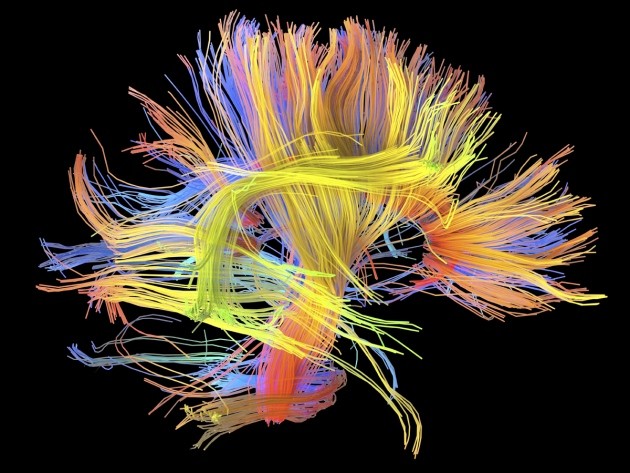According to a new study, if you obsess over your appearance your brain might be wired abnormally. Body dysmorphic disorder is a disabling but often misunderstood psychiatric condition in which individuals perceive themselves to be disfigured and ugly, even though they look normal to others. The researchers published their findings in the edition of the journal Neuropsychopharmacology.
Senior author Dr. Jamie Feusner and colleagues report that individuals with body dysmorphic disorder essentially suffer from widespread “bad wiring” in their brains; thus, abnormal network-wiring patterns exist across the brain as a whole. The disorder equally affects men and women, and occasionally children and older adults. About 76% of parents of a child with body dysmorphic disorder think their child is either overly-conceited or simply lying about their condition. The disorder affects approximately 2% of the population and is more prevalent than schizophrenia or bipolar disorder. Despite its prevalence and severity, scientists have little understanding of the neurobiology of body dysmorphic disorder.
In agreement with earlier research that reported that individuals with the disorder process visual information abnormally, the new study discovered abnormal connections between regions of the brain involved in visual and emotional processing. Dr. Feusner explained, “We found a strong correlation between low efficiency of connections across the whole brain and the severity of BDD. The less efficient patients’ brain connections, the worse the symptoms, particularly for compulsive behaviors, such as checking mirrors.” Individuals suffering from the condition tend to fixate on minute details, such as a single blemish on their face or body, rather than viewing themselves in their entirety. They become so distressed with their appearance that they often cannot lead normal lives, are fearful of leaving their homes, and occasionally even commit suicide. Patients frequently have to be hospitalized.
The study group comprised 14 adults diagnosed with body dysmorphic disorder and 16 healthy controls. The subjects underwent brain scans, which had the goal of mapping the brain’s connections to examine how the white-matter networks are organized. White matter is made up of nerve cells that carry impulses from one part of the brain to another. To conduct the scans, the researchers used a sensitive form of brain imaging called diffusion tensor imaging (DTI). DTI is a variant of magnetic resonance imaging that can measure the structural integrity of the brain’s white matter. From these scans, the investigators were able to create whole brain “maps” of reconstructed white-matter tracks. Next, they used a form of advanced analysis called graph theory to characterize the patterns of connections throughout the brains of people with body dysmorphic disorder and then compared them with those of healthy controls.
The investigators found that individuals with body dysmorphic disorder had a pattern of abnormally high network “clustering” across the entire brain. This suggests that these individuals may have imbalances in how they process “local” or detailed information. The researchers also discovered specific abnormal connections between areas involved in processing visual input and those involved in recognizing emotions. “How their brain regions are connected in order to communicate about what they see and how they feel is disturbed,” explained Dr. Feusner, who also directs the Adult Obsessive-Compulsive Disorder Program and the Body Dysmorphic Disorder Research Program at UCLA. He added, “Their brains seem to be fine-tuned to be very sensitive to process minute details, but this pattern may not allow their brains to be well-synchronized across regions with different functions. This could affect how they perceive their physical appearance and may also result in them getting caught up in the details of other thoughts and cognitive processes.”
Dr. Feusner noted that the study advances the understanding of the disorder by providing evidence that the “hard wiring” of patients’ brain networks is abnormal. He explained, “These abnormal brain networks could relate to how they perceive, feel and behave. This is significant because it could possibly lead to us being able to identify early on if someone is predisposed to developing this problem.”








